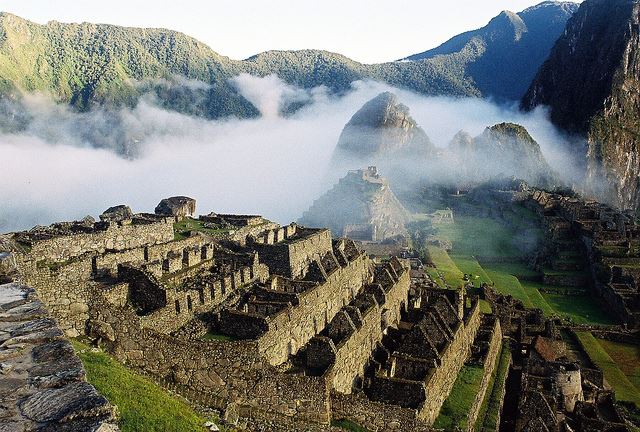


There are many ancient ruins, many beautiful mountain hikes, many places that combine history and mystery in an intriguing blend—but none like Machu Picchu. Perched high in the Peruvian Andes, Machu Picchu is one attraction that lives up to, and beyond, its hype.
Built by the Incas around 1450 and later abandoned, Machu Picchu sat in relative obscurity until 100 years ago when Hiram Bingham, an American explorer and professor, stumbled upon the ruins in July of 1911. Bingham, guided by in-the-known locals, mapped and documented the jungle-covered stone ruins to the best of his ability before returning to the United States where he published his finding in National Geographic.
In his own words, Machu Picchu:
“…not only is larger and contains more edifices than any other ruin discovered in Peru (except Cuzco); it has the additional advantage of not having been known to the Spaniards, of not having been occupied by their descendants, and of not having been torn to pieces by treasure hunters seeking within the walls for the gold and silver ornaments that were not to be found in the floors.
In other words, Machu Picchu is not only more extensive than any previously discovered Inca city outside of Cuzco, but it is in a remarkably good state of preservation, and its architecture has not become confused with Spanish efforts to build churches and villas.” (Bingham, Hiram. “In The Wonderland of Peru.” National Geographic April 1913.)
Although Bingham and numerous scholars since have studied Machu Picchu extensively, the true purpose for its construction remains largely a mystery. Recent theories identify Machu Picchu as a retreat for royalty, and when you first set sight upon these ruins surrounded by lush mountain peaks with a rising mist that frosts the outlying buildings, it is easy to visualize this as a lavish compound of luxury.
Section Type: standardWidthImageS

Machu Picchu is located about 50 miles from Cusco and, since it is only connected to the outside world by train tracks, manages to maintain part of its previous isolation. Visitors must travel by train from either Cusco or the Sacred Valley to the tiny to town of Machu Picchu Pueblo. From here, a bus follows a winding road up and around the mountain to the Machu Picchu citadel. Alternatively, ambitious (and fit) visitors can hike to Machu Picchu via the Inca Trail.
Most Machu Picchu tours include 2 hours with a specialist guide who details the most important and interesting structures. However, as the site contains over 200 buildings (or partial buildings), there is plenty to explore, and an early morning visit is highly recommended. As the sun breaks through the mist, Machu Picchu is tantalizingly revealed bit by bit until the whole complex is enveloped in an amber glow. To fully appreciate the splendor of a Machu Picchu sunrise, head directly to the Sun Gate or toward Wayna Picchu, both of which offer panoramic views of the entire complex.
Perhaps Bingham, the first Westerner to experience these mystical ruins, describes the beautiful mix of expert architecture and stunning scenery better than any other:
“The Incas were, undeniably, lovers of beautiful scenery. Many of the ruins of their most important places are located on hill tops, ridges, and mountain shoulders, from which particularly beautiful views can be obtained.
Remarkable as is the architecture of Machu Picchu, and impressive as is the extent of the stone-cutting done by a people who had no steel or iron tools, neither of these things leaves more impression on the mind of the visitor than the inexpressible beauty and grandeur of the surroundings.”
Section Type: cta
Keen to see Machu Picchu for yourself? Check out our Machu Picchu & Peru tours or speak to one of our Destination Experts about crafting the bespoke vacation of your dreams.
Thanks to Apollo for the title image of this blog.


Copyright © 2025 SA Luxury Expeditions LLC, All rights reserved | 95 Third Street, 2nd floor, San Francisco, CA, 94103 | 415-549-8049
California Registered Seller of Travel - CST 2115890-50. Registration as a seller of travel does not constitute approval by the state of California.










